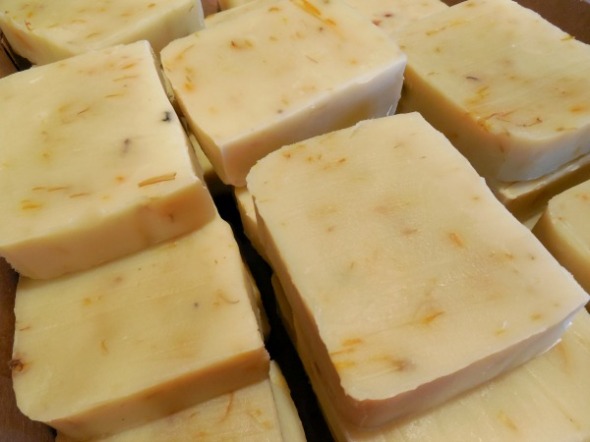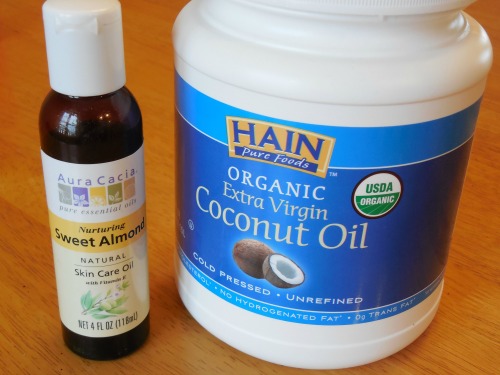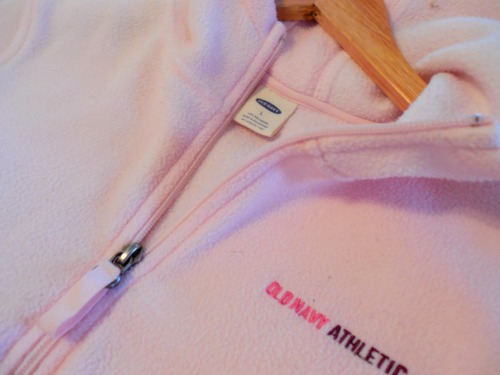Caring for Dry Winter Skin and Eczema–Part Two
Posted: February 3, 2014 Filed under: health | Tags: DIY, eczema, homemade lotion, homemade soap Leave a comment(Usual disclaimer. I’m not a doctor or dermatologist. All the advice given is the opinion of a mom just doing the best she can!)
In the last post on dry skin, we started with the insides, trying to nourish and care for the whole body, whose health is often reflected by our skin. But sometimes, no matter how diligent we are to get enough water, or take our supplements, we need some extra help for dried out skin and eczema. These are some things that have been helpful for us this year.
Baths and Soaps
Conventional wisdom has said that especially for children, it’s best not to bathe too frequently in the dry winter months. All that hot water can dry you out even more if you’re not careful. Some suggest taking lukewarm baths, but who wants to do that when it’s 20 degrees (or colder!) outside.
I tend to shower every day. But for my daughter, we keep baths to about every other day this time of year.
I think the soap you chose is the main issue with bath time. And I think we’ve tried about everything. Dove, Basis, Cetaphil, castile soaps, store bought “natural” soaps. None of the doctor recommended varieties (those first three) were helpful. They would often burn her irritated skin and they seemed to dry her out even more.
But the natural soaps weren’t so bad. Then, we found the perfect soap for her. Or I should say, we MADE the perfect soap for her. A friend gave me a little soap making lesson this past fall and her recipe is great. She only uses palm oil, coconut oil and olive oil. (And yes, the lye. But if you just follow directions, it’s not that hard or scary.) We grew Calendula flowers in our herb garden and dried the blooms. So we added some of those dried blooms and infused olive oil to the mixture. (Calendula is one of the best herbs for healing irritated skin.)
The result is a creamy, sudsy bar of soap that leaves our skin feeling very moisturized and calm.
I don’t feel good about posting the recipe for the soap here, cause it’s not really mine, and I’m still a novice at this. Maybe someday. However, there are a ton of good resources out there for soap making if you want to give it a try–even your library probably has some.
And if you’d like a place to buy your own natural, chemical free soaps, I’d recommend finding an artisan soap maker in your area. Many times you can find these little hand crafted bars at craft shows or gift shops. And you’d probably be able to find a contact number for the soap maker, so you can find out exactly what’s in there. If that doesn’t work, Vitacost as a pretty good selection that I’ve ordered soap from too. It’s worth the effort to find a quality bar of soap that’s not loaded with synthetic chemicals.
My hands are giving me the most trouble right now. And the best solution I’ve found for non-drying, non-irritating hand soap is quite simple. I fill an empty foaming hand soap dispenser with 2-3 TB of liquid castile soap (I like this brand. The tea tree is naturally antibacterial.) and the rest with water. Works great, doesn’t dry us out and it’s incredibly frugal!
Lotions and Potions
The first thing many of us reach for when our skin is dry and irritated is moisturizer. The options are overwhelming. The standard recommendations from my daughter’s doctor have been Cetaphil, Eucerin and CeraVe. The Cetaphil burns like crazy. The Eucerin and CeraVe help some, but really, they just sit on the skin, or worse, absorb into the blood stream taking all their synthetic, petroleum junk with them.
They did nothing to nourish and heal her skin. Plus they were expensive. I didn’t feel like we were getting the bang for our buck and I was concerned about the loads of toxins we were exposing her to.
I had seen lots of DIY lotions and balms out there, but had been reluctant to take the plunge. But really, it’s not that hard.
So about a month ago I placed an order for some shea butter, almond oil (Amazon affiliate links) and essential oils online. For a while, I just used the almond oil straight–right after her bath. If that’s all you want to bother with, I’d highly recommend it. Her skin would still be incredibly soft and moisturized even the next day–something that we’d never get with the store products. Almond oil is loaded with essential vitamins like vitamin E, which aid in healing, doesn’t clog pores and is nourishing for the skin (source).
When I got up the nerve, I decided to do a little chemistry and mixed a whipped lotion for her of coconut oil, shea butter, the Calendula infused olive oil we had, almond oil and essential oils for extra healing and help with the itching. The end result wasn’t perfect (I didn’t cool the shea butter quickly enough and ended up with a grainy texture), but even so, we ended up with an incredibly moisturizing and soothing lotion that did wonders for our itchy, dry skin.
(I promise to post the method and recipe after I work out the kinks…and soon cause we’ve almost used up the first batch!)
I’d encourage you to experiment on your own. There are a ton of homemade, natural recipes out there for the skin.
Choose Your Clothes Wisely
Clothing? Really? Does that make a difference for dry, itchy skin? Actually, it does. Ironically, some of the first items we choose to stay warm in the winter can work against us and our skin.
Fleece. You know all those cute, fuzzy footed pajamas we love to put our little ones in for cold winter nights? Yeah, don’t do that if your child has eczema and seriously dry skin. Why? Fleece actually wicks moisture away from your skin.
This didn’t dawn on me at first, but when my daughter was a baby/toddler, it always seemed like her skin was rough and dry and scaly in the morning–when we had slathered her down with goopy cream just before bed. Then I remembered what I had learned about fleece when we bought backpacking gear way back when. Hikers wear fleece because it will pull sweat or moisture away from your skin, keeping you dry and warm. And if you’ve got dry skin, that’s bad news. So we axed the fuzzy pajamas and selected natural cotton whenever we could.
Scratchy sweaters and blankets. Irritation equals itch. And itch equals rash. So take care to avoid rough wool or synthetic fabrics that might cause problems.
Whew! That’s a lot of stuff! Sorry for the long winded post. This is what we’re doing this winter to keep sensitive skin happy, keep the toxins to a minimum and not break the bank. But now it’s your turn…
What works for your dry winter skin?
(This post contains affiliate links. Great products and prices for you. Small commission for me. Thanks!)














